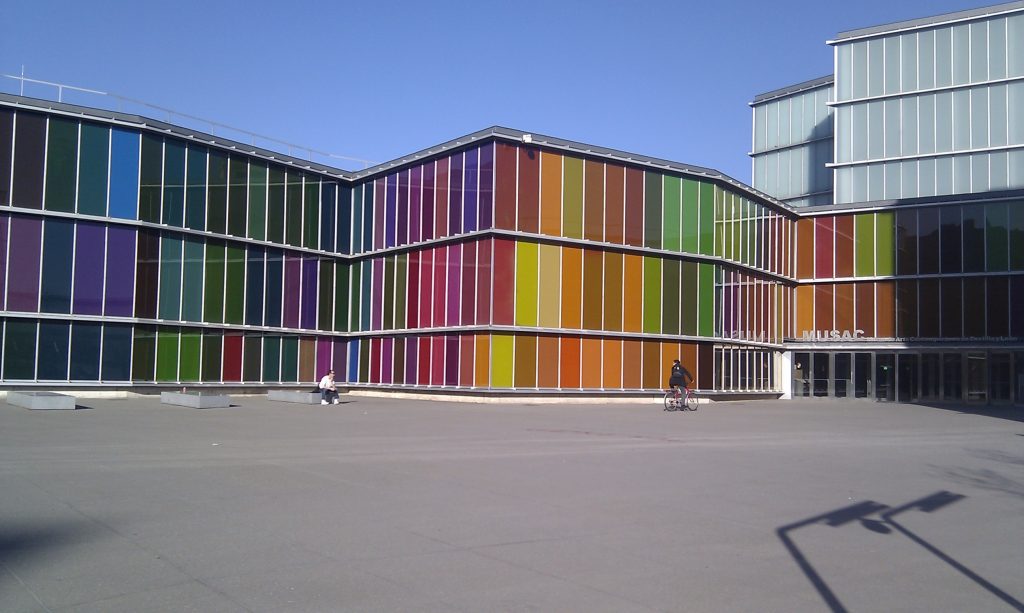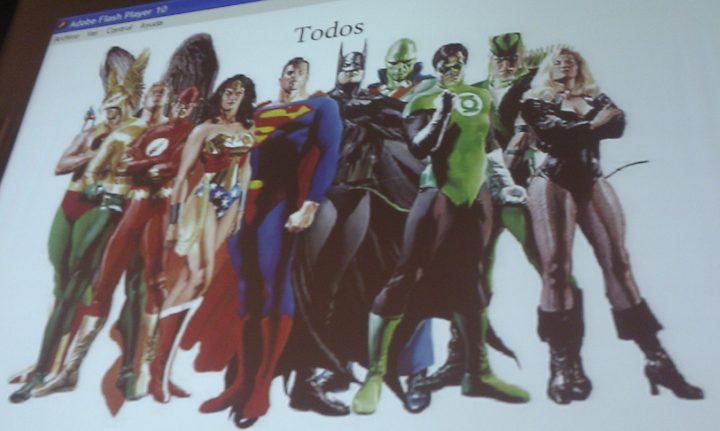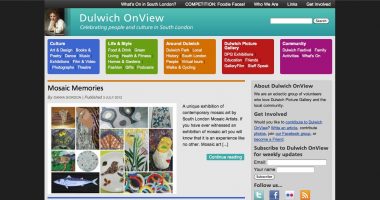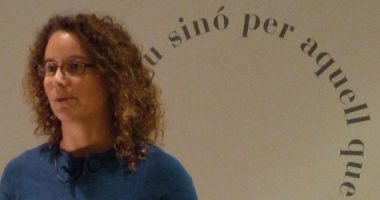Some impressions of the “Meeting on Social Networking for Museums and Contemporary Art” at MUSAC.
It’s Monday April 4, start to write a summary of the meeting on Museums and contemporary art spaces andsocial networks at the Museum of Contemporary Art of Castilla and León-MUSAC and the hashtag for the event, #cmuseos is still hot. At the Linkedin group created for the day the debate still very much alive and members are wondering how to give continuity to the issues and concerns that arose during the April 1 meeting in León. There are signs that there is a majority of female professional in the field of culture, formed by cultural managers, journalists, librarians, archivists, web managers of museums, independent consultants that seeks answers to the changes that have taken place in culture after the boom of social web. Some people label them as “community managers”, as this group works with 2.0 tools and learn, through tweets and retweets, how they work.

MUSAC – León – Foto: Lucía Calvo.
Are cultural institutions successfully using services or 2.0 platforms? How do they interact with communities of users, artists or public network? How do organizations adapt to cultural change that involve communication and networking? The answers to these questions were coming through the morning interventions given by trainer and consultant Javier Leiva and Javier Celaya Dosdoce’s founder, and the table in the afternoon, where I participated on behalf of the CCCB along with Nerea García ( Medialab Prado), Conxa Rodà ( Picasso Museum), Pilar Gonzalo ( Museo Nacional Centro de Arte Reina Sofia), Paula Álvarez ( Museo de Arte Contemporáneo de Castilla y León –MUSAC).
I triy to summarize some of the impressions of the meeting using the five W’s, a classic resource in journalism.
What?
What are the cultural centers or museums in relation to social networks? Javier Leiva said it clearly: “We must be ourselves, be honest and realize that we can not please everyone.” This statement may seem obvious but also essential in a world where we tend to attach more importance to surfaces than reality. Leiva’s words also imply the acceptance of external criticism, an exercise that is often difficult.
Javier Celaya (“one does not fail at Internet, but learn from mistakes“) advised to museums that have not yet been active in the social web to think well why they want an identity: “It must be a strategic decision that not only allows us to hold a media space, as we do in the analog world, but rather serves to create a community around our organization, “said Celaya.
Who?

“Community manager”, everyone. Photo: Lucia Calvo.
This was perhaps one of the points that generated a vital discussion among attendees. Who should take charge of creating a community around an institution? The so-called “community managers” or should a team have a responsibility? Interestingly, both Javier Celaya Javier Leiva used in their presentations entertaining superhero images to illustrate the role of “community manager” and insisted the answer should be everybody (not only the intern, not only the “expert” on Internet.)
In the afternoon debate the discussion went around the number of communication skills that is creating a certain type of professional (mostly, people who belong to departments or print media). However, as Conxa Rodà from the Picasso Museum explained, organizational change is crucial: “One cannot do 2.0 with a 1.0 mentality.” How expensive is this change expected to be? Some attendees in the audience stressed the difficulties they have to know what the rest of his/her colleagues are doing. Therefore it is important that the figure of “community manager” has the support of the organization – especially in the case of a trainee, claimed Conxa Rodà, and to know very well what criteria should be followed. Hence the importance of developing guidelines or standards in 2.0 organizations.
How?
“Facebook is one of the most irrelevant tools for museums,” said Javier Celaya. The consultant suggested that if we create accounts in 2.0 tools only to generate noise, it is better not to do so. Facebook and Twitter are the star tools but if we choose to be present, we must first consider what are the goals of our project and who we want to target. Perhaps the answer to these questions involves the use of tools that are less popular but no less effective: wikis, blogs or tools that are already used by communities of users related to our project
Why?
When we justify why the social networks we usually resort to statistics. Thanks to Google God there are many and varied monitoring tools. Javier Celaya brought some of them in his presentation as well as Minipunk, a twitter member that had an improvised relevance at the conference. If we can quantitatively measure our impact and visibility to the networks, does that justify our presence? Perhaps one of the (self-) criticism that we should take into account is whether we qualitatively assess the communication network, and social networks-not only the one of our organizations. It doesn’t matter if you have many supporters on Facebook and Twitter if you do not know how they can contribute / collaborate in a project.
In this regard, I find very interesting the contribution that Nina K. Simon makes in her book The Participatory Museum. Before you throw yourself in the pool of participation, you should think through why. She proposes different models, depending on the relationship between the institution and the public. From the unidirectional tweet “Hello, how are you? At my museum we do this” to the co-creation projects and direct cooperation with users there is certainly a gap.
From the five W’s WHEN was missing, but from my point of view, that should be decided by each institution, considering how it has answered to other questions.
I thank the organization of MUSAC for the professional and personal experience that led me to this experience and to celebrate the success of meetings like this (a full auditorium, 600 connections for streaming and intense debate on Twitter as #cmuseos that @culturpunk collected in a document).
- The complete videos and material of the day
- Presentation by Javier Leiva
- Presentation by Javier Celaya
- I+C+i session «Cultural Institutions 2.0?» with videos and material from a similar session celebrated at CCCB last April 2010.
- Features: Cultura Tic / Museu Picasso / Ileon / Sedic Blog
If you have a feature on that day please let us know and we will include it.



Pilar Gonzalo | 06 April 2011
Estupendo artículo. Gracias, Lucía. Si tuviera que elegir de entre todas las preguntas que enumeras elegiría como la clave de todo esto el “cómo”: de qué manera pretendemos conseguir los objetivos marcados. En este sentido, me sumo a tu opinión de que lo más necesario no es siempre lo más “lucido”, ni por interacción ni por reconocimiento; tal como pasa en los entornos wiki. Quizás y poco menos de “yo” y un poco más de “nosotros” sería la clave metodológica para sacar nuestros proyectos adelante.
Leave a comment